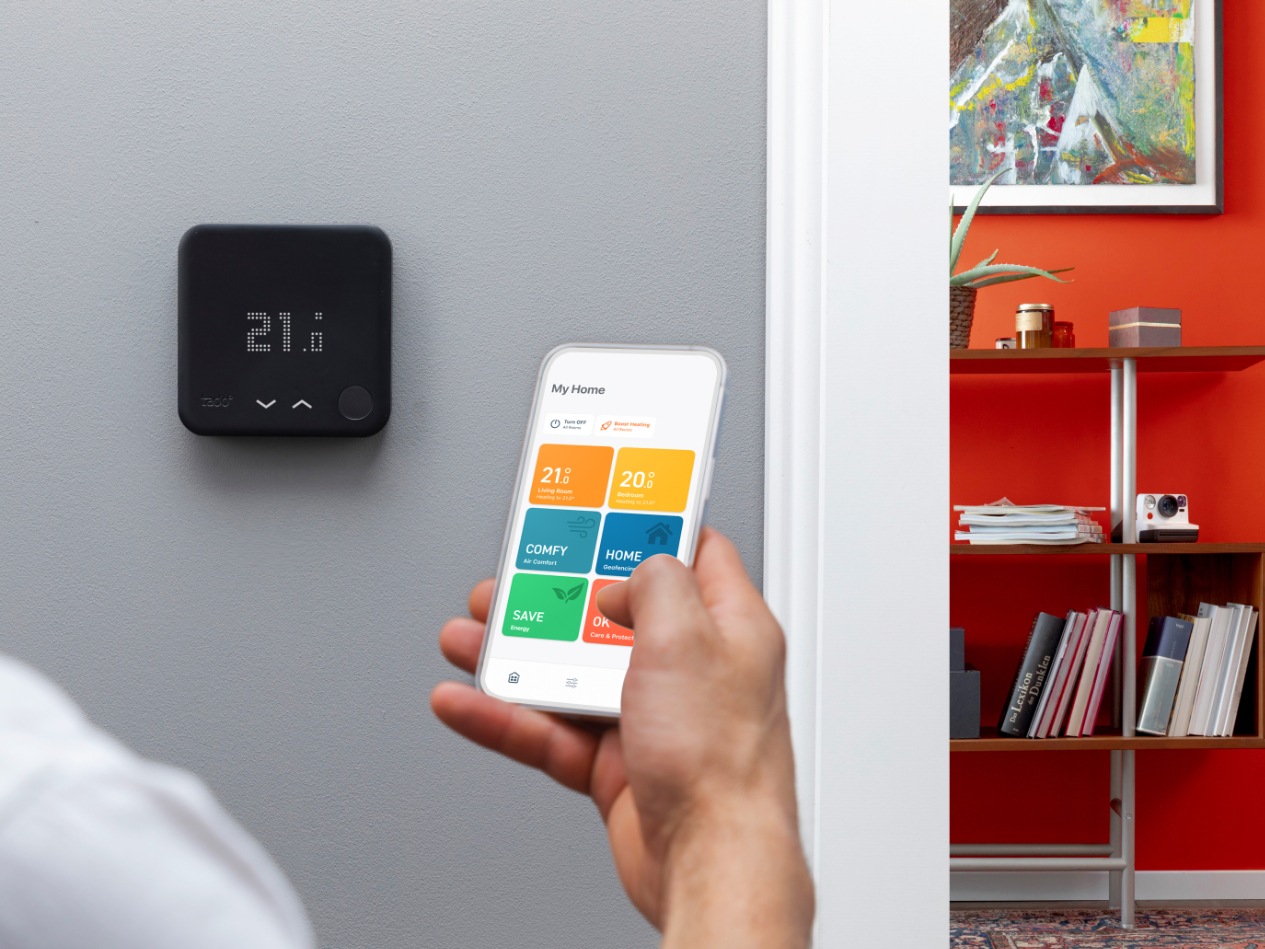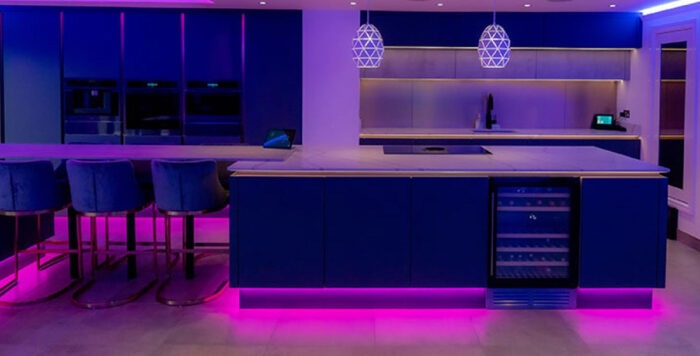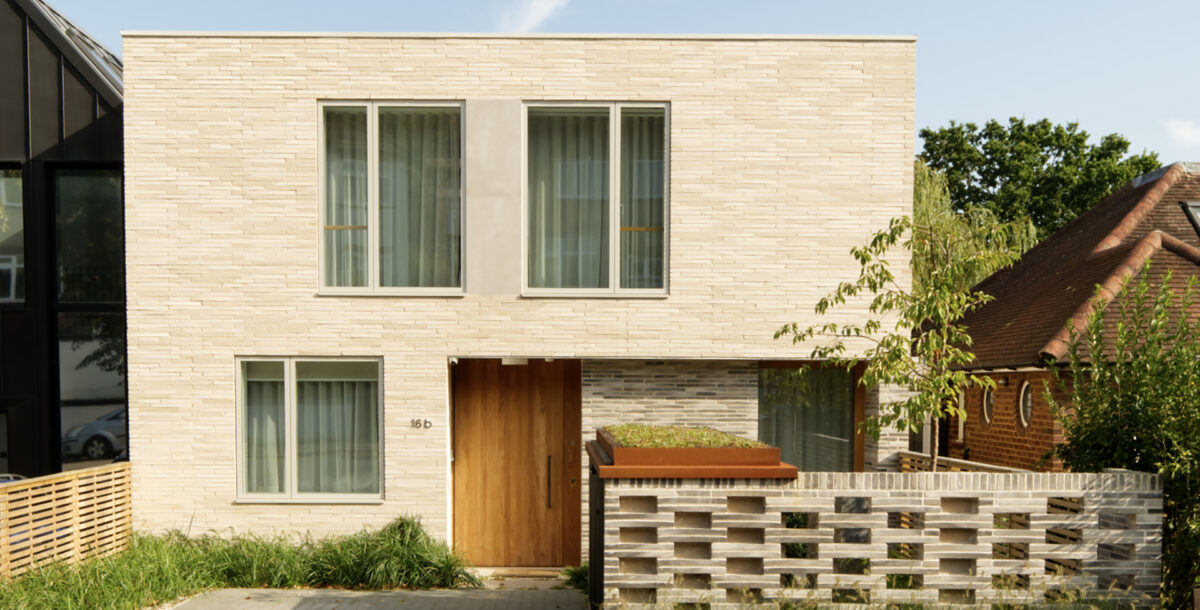Smart heating guide – how it works and how much money it can save you
What is smart heating? Plus how it works, and why you need it
The fuel you use to heat a building makes a huge difference to both its running costs and its environmental impact. But almost as important are the controls. Smart heating uses accurate, connected controls and applies more intelligence to managing them, helping you minimise costs and emissions while making sure the building environment is still up to scratch.
There are lots of smart heating appliances and devices, from self-contained electric heaters to thermostats and controllers designed to work with central heating zones and rooms. Here we’re going to focus on the latter: how do these work, what features do they offer, and why are they any better than conventional programmers and thermostats?
What is smart heating?
Before we can answer that, it’s worth a quick look at ‘dumb’ heating. Traditional heating controls typically vary from the simple on/off switches found on bar fires, through the time-based controllers of storage heaters, to the programmers and thermostats typical of a gas or oil-fired central heating system. These are fine for simple, manual operation, or for setting a regular schedule, but they have a few major limitations.
The chief one of these is that conventional heating typically has next to no idea about the environment in which it operates. A central heating system has a thermostat, but this only monitors the temperature in a central location – usually the hall. And while recent systems should have thermostatic radiator valves (TRVs), these don’t have any idea whether someone’s in each room – or even if there’s a reason why the room’s cold to begin with.
Dumb controls might be fine for making sure a room or home stays warm, but they rely on humans to tell them when that’s not necessary. In most cases, rather than constantly running heating, it’s much more efficient to turn it off when a room or zone is empty and reheat it when people return. But with a conventional system, heating continues to run when everyone’s out unless you manually tell it to stop. If you go on a winter break and forget to put your heating and water controllers in holiday mode, you could return to a needlessly big energy bill.
Conventional heating is also blind to other events that could cause it to waste fuel. For example, if you open a window and let cold air in, a conventional TRV will open wide to try and maintain room temperature, burning more fuel when you actually want it to back off.
Smart heating products aim to apply technology to solve problems like these. For starters, they offer smarter schedules, where you can vary the temperature by the time of day; dumb controls let you set one temperature only and vary if the heating is on and off. Variable temperature selection is useful, as you can set a minimum temperature for use during the day and while you’re away, say 14°C to prevent condensation build-up, and then increase the temperature at night.
With more accurate sensors and cloud-connected intelligence, smart heating systems can detect when everyone’s gone out, or even when a window’s been opened, and shut down rooms or the whole home as needed.
In fact, smart heating can go further, for example, by pulling in weather forecast data to adjust for things like temperature and sunshine. By subtly holding back the heating on a sunny day, for example, they can reduce energy use and help prevent overheating.
While smart heating can save a significant amount of energy, it can also improve the comfort of a home. For example, you can configure some systems to reach your desired temperature by a certain time rather than having to work out for yourself when the heating should come on. And some systems will preheat your home as you get closer to it, so it’s approaching the right temperature by the time you return.
At this point, it’s worth debunking that old myth about running the heating all of the time to reduce energy costs. This simply isn’t true: it’s cheaper to let your house cool down when it does need heating, and then provide heat when you do.
How does smart heating work?
You can turn almost any central heating system smart by fitting it with smart controls, which simply take the place of existing switches, timers and valves. Smart thermostats usually have two components. First, there’s typically a connection box that connects to the boiler, turning it on and off based on your schedule and the current target temperature. Then, there’s the smart thermostat, which replaces your existing one.
The main difference, at this point, is that if you turn the temperature up on the smart thermostat at any point in the day, it will call for heat and your house will start to warm up. Typically, this manual override will last for a set period as set in the app (such, as one hour), or until the next scheduled temperature change. This make smart heating more convenient than dumb heating, as you can manually get a boost; with dumb controls, turning the thermostat up has no effect unless the timer controls are set to on.
Some systems – including Tado and Genius Hub – can be expanded with smart radiator thermostats. These typically replace the head on a standard TRV with a smart unit, combining a thermostat with a servo motor that can adjust the valve opening to precisely control the flow rate to the radiator. Smart radiator thermostats allow a lot more fine-grained control over where and when you heat – for example letting you begin heating children’s rooms earlier in the evening, without also heating adults’ rooms; or you can heat bathrooms in the morning and evening only, but leave them set to cooler temperatures during the day when nobody needs to go in those rooms.
Each smart TRV can call for heat. So, if you walk into a cold room and want to heat it, you can use the app or physical controls to turn on just that radiator and warm just that room. Again, manual overrides will last for either a pre-set time or until the next scheduled temperature change. Smart TRVs have on other big advantage: when just one or two are open, those radiators heat up much faster than when you use a traditional thermostat, where the heating has to warm every radiator in your home.
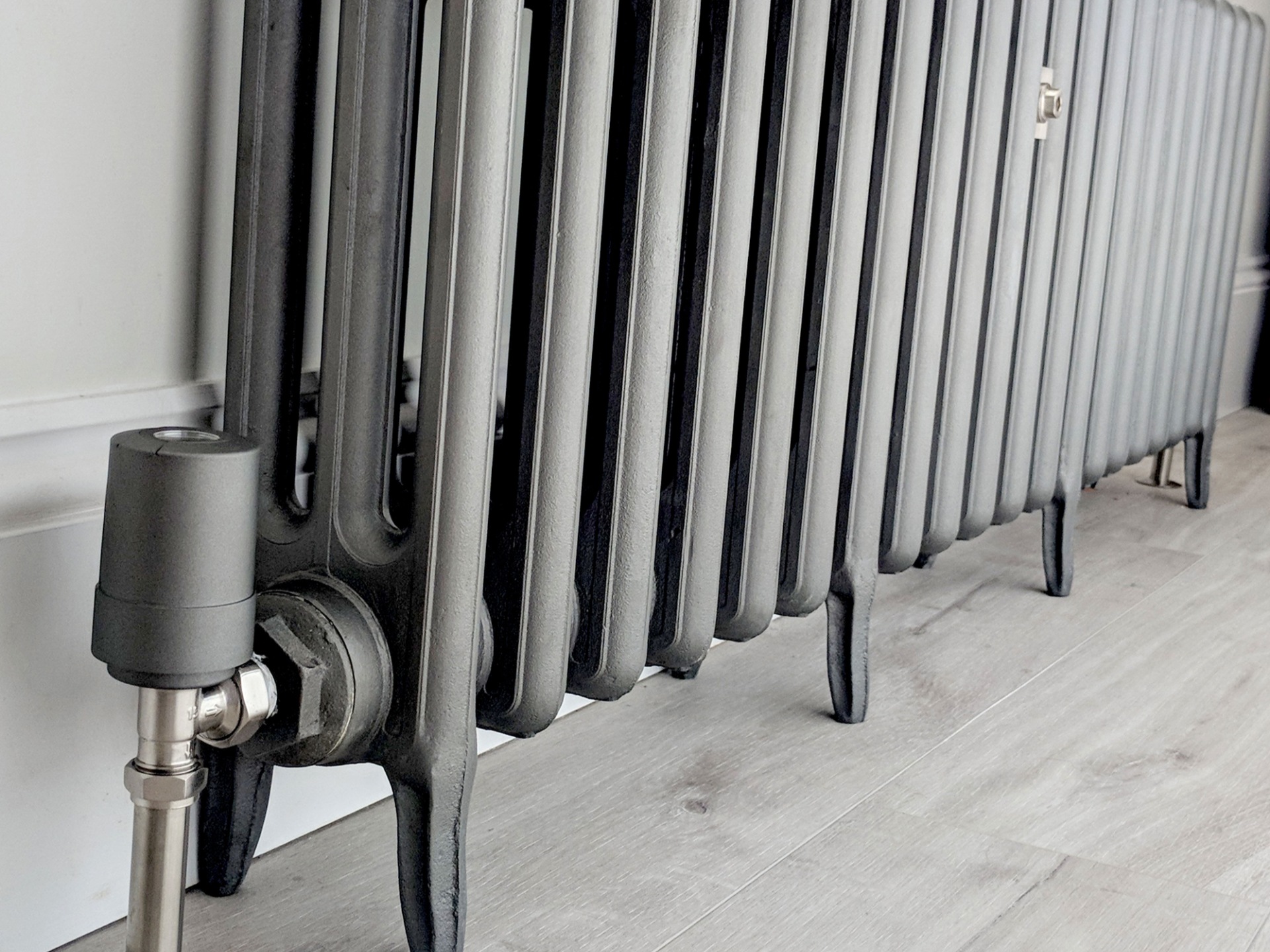
- Image Credit: Genius Hub
Additional devices in a system like Tado’s let you control underfloor heating or bring your hot water under smart control. Genius Hub also makes controllers suitable for electric radiators, and presence detectors that can switch rooms and zones based on people’s behaviour, rather than an inflexible schedule.
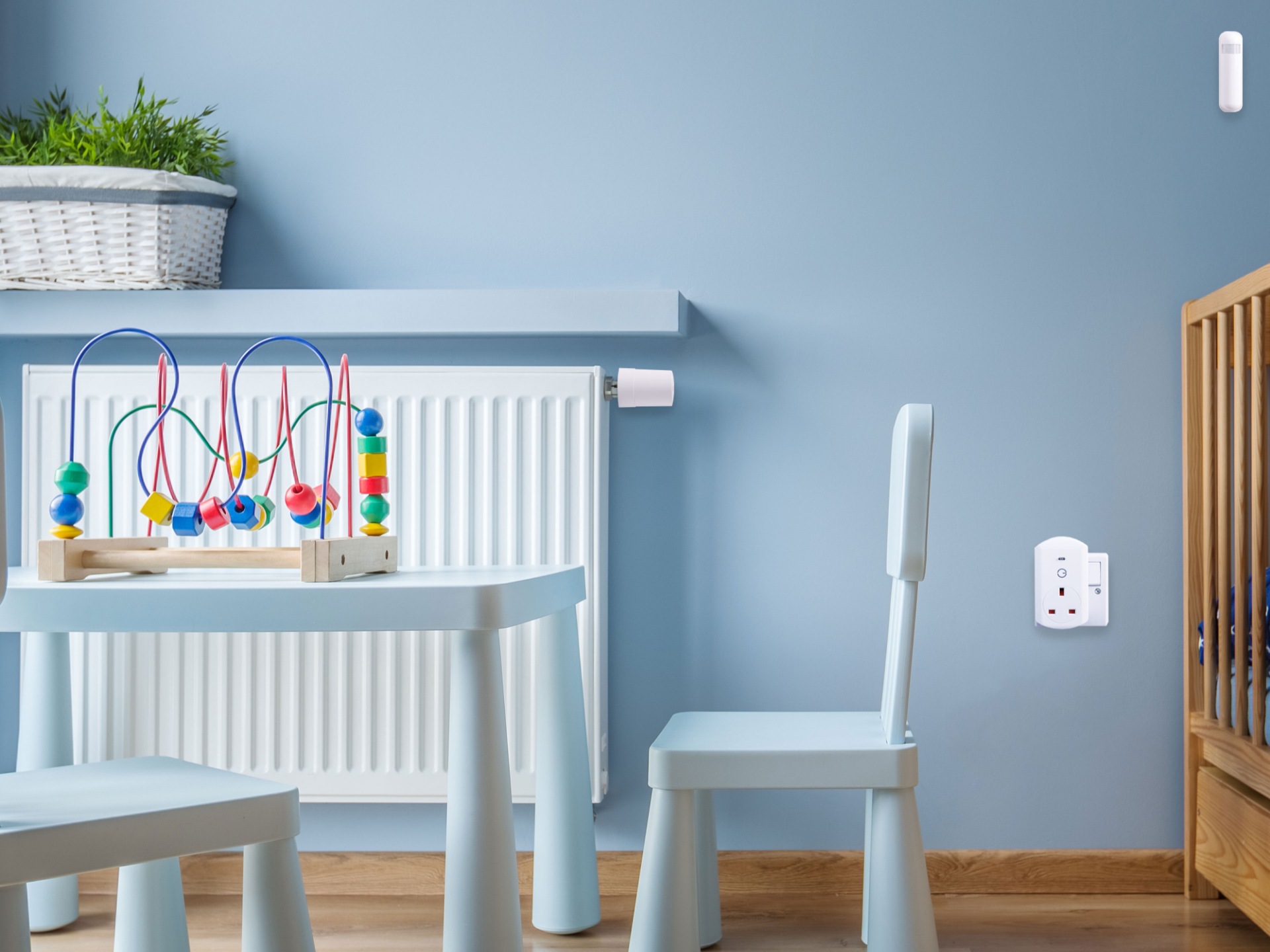
- Image Credit: Genius Hub
Smart heating combines all these components with the intelligence to analyse what the sensors are saying and work out how the heating system should respond. In some cases, the smart controls will learn from your inputs and how the building reacts, programming themselves or refining their behaviour for better results.
Alasdair Woodbridge, founder and managing director of Genius Hub, explains: “Smart heating systems like Genius Hub learn how the building responds to the heating. Every time a room is heated, the Genius Hub uses this as an opportunity to learn, and logs the delay and [temperature] rise rate against the outside temperature, so the longer a system is installed the better the algorithm gets as its knowledge increases with each heating period.”
You can make basic changes, such as adjusting the desired temperature on smart controllers themselves, but you’ll usually need an app to get at the full range of options. Apps let you set the schedules and temperatures the system will work to, while several smart heating systems rely on the location of the devices the app is running on to work out whether anyone is actually home. Systems such as Genius Hub can even use presence detectors to switch heating off in individual rooms when they’re not occupied.
Digital temperature and humidity sensors are vital for features like open window detection. This works by spotting when there’s a sudden change in room temperature – likely to have been caused by a window or door being opened – and the system then cuts the heating to that room for a period to avoid wasting energy.
One final benefit of smart heating is that the best apps can give you a lot of information about how and when you’re heating your home, and highlight the influence of other factors such as sunlight. This feedback could help you pick better settings, or encourage you to change your behaviour to save more energy.
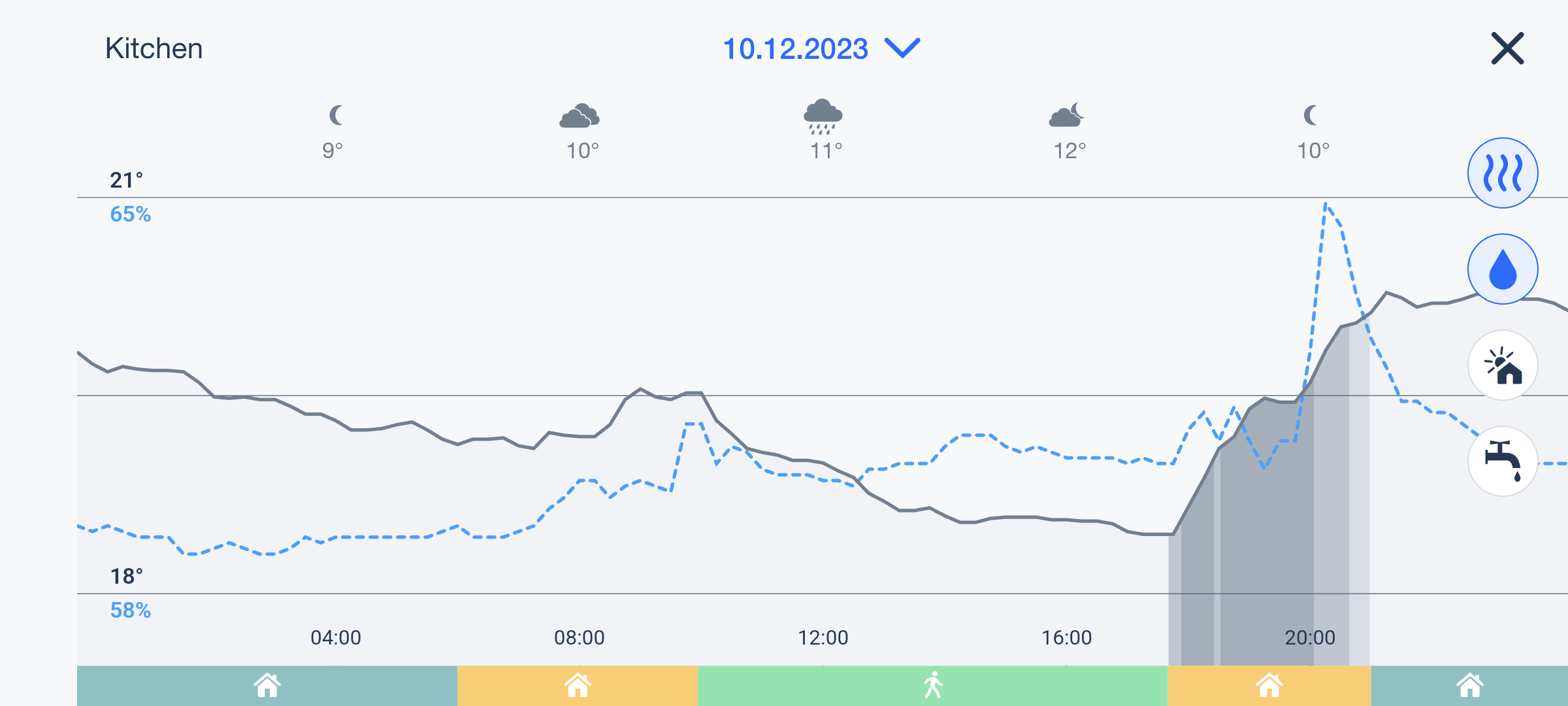
What modes do smart heating systems have?
Features vary by system, but most smart heating systems will have one or more of the following modes. Please note that names of features vary by system, although they’re usually called something similar.
Presence detection\geolocation
This feature uses physical sensors in your home or your phone’s location to work out when nobody is at home, automatically reducing the target temperature so that you’re not heating your house when it’s empty.
Optimal start
Over time, the system works out how long it takes your house to reach the target temperature, using this data to have your house warm by the time you set in the schedule. Without this feature, your heating only turns on at the time in the schedule, and warms from there.
Optimal stop
Using data on how your house continues from residual heat in radiators once the heating is turned off, this feature will cut the heating off early to save money and prevent your house from overshooting the target temperature.
Weather compensation
This feature uses the local weather report to either boost target temperatures when it’s cold or reduce them when it’s going to be a warm day, and the sun will likely warm your house naturally.
Open window detection
This feature uses an algorithm to detect a drop in temperature, typically caused by an open window or door and then turns the heating off so that you’re not wasting heat and save money.
How does OpenTherm fit in?
You may have heard of OpenTherm in connection with smart heating controls. It’s actually supported by many conventional controllers, too, along with recent smart heating controllers by brands including Nest, Tado and Genius Hub. OpenTherm allows heating controllers finer control over how the system works, and it’s a particularly useful way to get the best efficiency from a condensing boiler or heat pump.
OpenTherm is an upgrade to the conventional link between the main heating programmer and the heat source. Instead of just turning the heater on or off, it lets the controller say how much heat is needed, which means the hottest water is only produced when necessary – for example when you need to heat your home up quickly after a period away.
As the building nears its desired set point, OpenTherm lets the heater know it can reduce the water flow temperature. This makes it less likely that the system will overshoot and make the building too warm. That’s good for comfort, but it saves energy too. Condensing boilers are at their most efficient with a water flow temperature below about 65°C, and heat pumps become more efficient the cooler they run. In both systems, the cooler the water output, the lower the running costs.
“In essence, using smart heating controls in conjunction with a heat pump creates more efficiency,” adds Alasdair Woodbridge. “Heat pumps like to ‘work low and slow’ (lower flow temperatures… and lower thermal load), which makes them ideal for working with underfloor heating. The Heat Pump will not be [using as much energy], as they have a better coefficient of performance (COP) the less hard they work.
“Another benefit of having a smart-heating-controlled heat pump is having the ability to turn off the heat pump remotely, enabling you to turn it on before you come home and adjust the schedules more, therefore reducing the overall run time.”
Does smart heating actually save energy?
The short answer is almost certainly yes. Geofencing alone will switch off your heating whenever you go out, cutting the amount of time you spend heating an empty building. It’ll also stop your hot water if you’ve got the necessary controller. Systems with presence detection will only heat a room if someone’s in it, too.
Open window detection will prevent you from wasting energy to heat an open room, while features like weather compensation may help save fuel on warmer days. And if you’re using OpenTherm, smart controls could help you save more energy by increasing the amount of time a boiler or heat pump spends operating at cooler, more efficient temperatures.
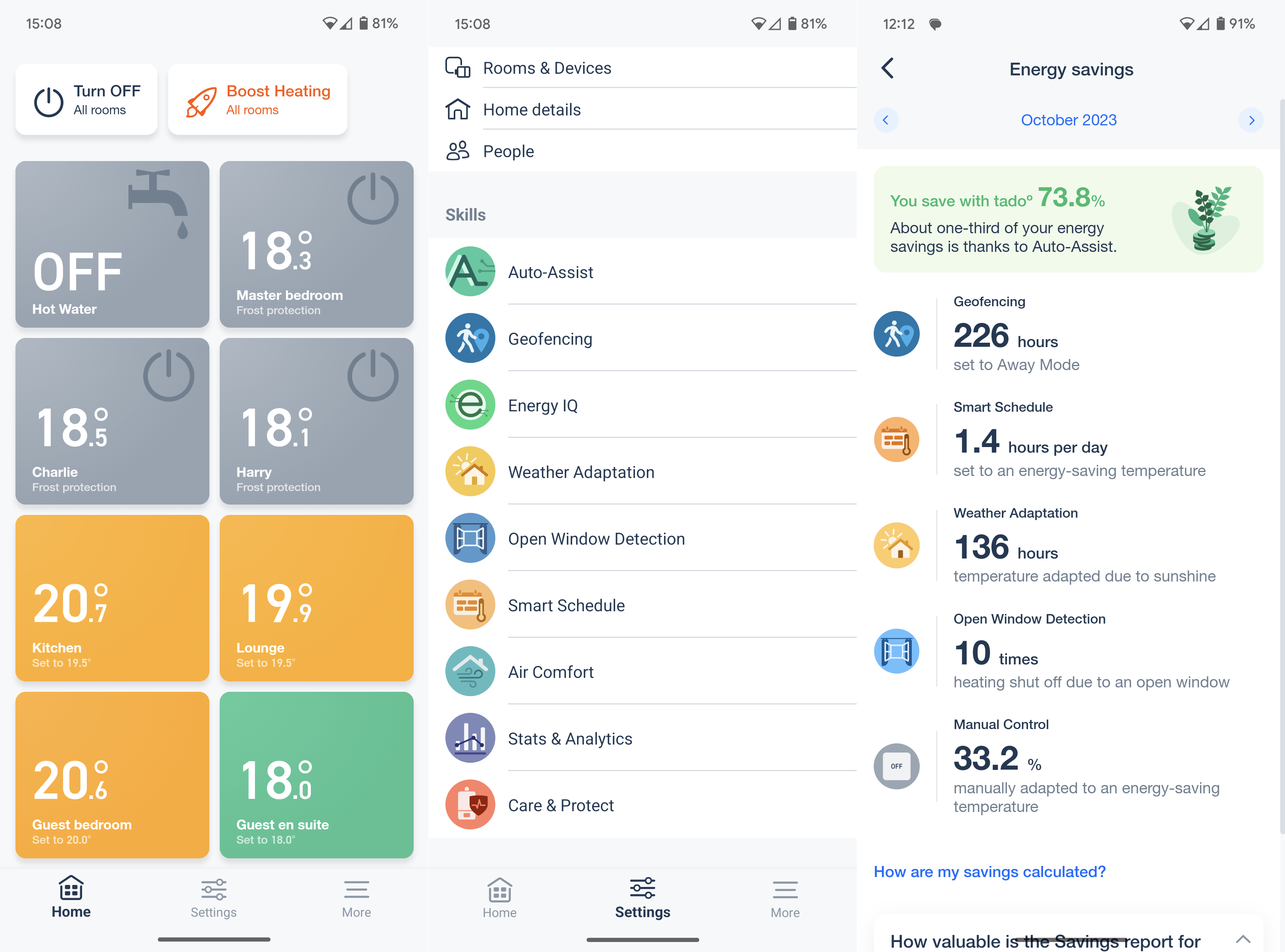
“The rule of thumb is that for every 1°C you drop the temperature you save 7%,” says Alasdair Woodbridge, “so all our customers need to do to save upwards of 30% is to turn the heating down in rooms that are not being used by about 4-5ºC.
“This is easy if you use the Genius Hub ‘Footprint Mode’ and Genius Room Sensors. Footprint Mode learns when rooms are used and only keeps the room warm when it knows when you are going to be using the rooms, then automatically drops it back to the lower target temperature when you are not in the room.”
The wide range of different buildings, behaviours and environments makes it hard to put a figure on the likely savings from installing smart heating, but a 2017 study looking specifically at the Nest Learning Thermostat estimated that its basic functionality saved 6-7% of a heating system’s annual gas use. This study also estimated a return on investment in the region of five years for a medium-large home – a period that’s likely to have gotten shorter given the subsequent rise in energy prices.
It’s quite possible that you could reduce energy use further, particularly with smart TRVs, which let you control temperatures on a room-by-room basis, so you no longer have to heat the entire house when the heating is on.
Genius Hub pointed us to its report, which analysed energy consumption across 48 rooms in the Belfry Hotel. Over a 10-week trial period, it found an average energy saving of 64% compared to the same heating system before smart controls were installed. It, too, says that the typical payback period for this kind of project would be two to five years.
In general, it’s likely that smart heating controls will save the most in buildings that are frequently unoccupied. They’ll save even more if there are rooms or zones that can be left unheated unless they’re in use, but having this flexibility requires extra controls that add to the up-front cost and could delay the return on investment.
However, smart heating isn’t just about saving money. By adding more fine-grained control, smart heating can improve comfort, and saving energy can play an important role in lowering a home’s carbon footprint.

